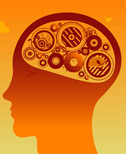ARTICLES
Advance Search
Aquatic Health
Aquatic Health, Fitness & Safety
Around the Internet
Aquatic Culture
Aquatic Technology
Artful Endeavors
Celebrity Corner
Life Aquatic
Must-See Watershapes
People with Cameras
Watershapes in the Headlines
Art/Architectural History
Book & Media Reviews
Commentaries, Interviews & Profiles
Concrete Science
Environment
Fountains
Geotechnical
Join the Dialogue
Landscape, Plants, Hardscape & Decks
Lighter Side
Ripples
Test Your Knowledge
The Aquatic Quiz
Other Waterfeatures (from birdbaths to lakes)
Outdoor Living, Fire Features, Amenities & Lighting
Plants
Ponds, Streams & Waterfalls
Pools & Spas
Professional Watershaping
Structures (Editor's Notes)
Travelogues & History
Water Chemistry
WaterShapes TV
WaterShapes World Blog
Web Links
Around the Internet
Aquatic Culture
Aquatic Technology
Artful Endeavors
Celebrity Corner
Life Aquatic
Must-See Watershapes
People with Cameras
Watershapes in the Headlines
Established as a wealthy man's weekend playground, this scenic, seven-acre slice of paradise on the Atlantic side of Islamorada in the Florida Keys is routinely used as the setting for fashion photography, commercials and films because of the archetypal way it expresses the "Keys Lifestyle." I was brought on board by Steve Siskind, the architect who designed the house. (He's done some spectacular residences through the years, but interestingly, he's never lived in a house and instead
12-Story-Deep Swimming PoolBoasts Underwater Walkway
Competence is a wonderful thing - and that was exactly the problem with the pond we were called in to replace: The original installers had none, and kept on demonstrating their utter lack of it all through the six or seven weeks they were on the job site. Happily, competence is something my own crew has in abundance, and in two days we not only got rid of the mess our predecessors left behind, but also installed a brand-new pond and turned a shabby mess into a
Please don't hold it against me: I was an English Literature major in college.
My specialty was the old stuff - Shakespeare's plays, the comedies of the Restoration period, poets from John Milton to Alexander Pope, and the early novelists, especially Jane Austen. It was mostly a pursuit of things written before about 1820 and kept me more than busy.
About eight months after I graduated in 1977, I took off and traveled the world for the best part of a year, spending May and June of 1978 in England and devotedly seeking out places where my favorite subjects of study had lived and worked and found inspiration. I went to the places where the great theaters had been and tramped along rivers and city streets listening for echoes and seeing if there was anything left that would attach me to the life experiences of my literary heroes.
It was all fairly thin until I reached the city of Bath, where Jane Austen had centered so many scenes in her great novels. Back in 1978, the place hadn't changed all that much since she'd lived there; it still embodied a mood and architectural style that easily carried me back 200 years to her time.
For all of her virtues, however, Miss Austen wasn't hugely impressed by Bath or at all into the one feature of the city that most thoroughly captured my imagination while I was there - that is, the natural watershapes that gave the town its name and had defined its function at least since the Romans reached England nearly 2,000 years earlier.
I'm mindful of the fact that I took this trip well before watershaping came to define my own function and life. Even then, however, I was blown away by the thought that the Romans had settled in this place around 70 A.D. and had converted the site's warm springs into a system of pools to serve as an early spa.
Not much is visible from those times; in fact, the baths were basically forgotten and buried after the Romans left a couple centuries later and were only rediscovered in Shakespeare's time. But seeing the still-visible parts of the Roman baths in person - and absorbing all I could about their inner workings from a memorable museum exhibit - I felt as though I was witnessing history in the grandest and most personal way possible.
When you take that history and surround it with graceful Georgian architecture, the package Bath offers its visitors is quite complete and unique. And so tasteful, I might add, that I have to think that even a Roman would have been pleased to see their baths set amid such a splendid and sociably neoclassical context.
No, you can't "take the waters" the way they did when Jane Austen was around, but it's well worth a visit: For inspiration, the baths of Bath can't be beat.
In several of the articles I've prepared for WaterShapes, the point has been made that it's not a great idea to apply plaster as the interior finish of a swimming pool (or any other watershape, for that matter) in spells of hot, dry weather - and I thought it was time to dig in a bit deeper and explain the reasoning behind that assertion. Basically, when a layer
Shakespeare Classic Performed In U.K. Edwardian Pool Complex
Sloshed Brit Swims in River Directly in Path of Cargo Ship




















Dry-Side Adventures